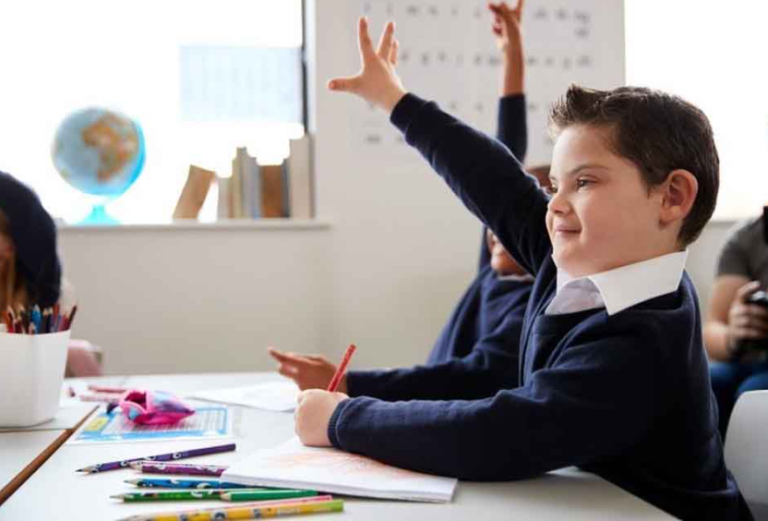Strategies to Improve Student Engagement and Motivation
In the ever-evolving landscape of education, one challenge that consistently demands attention is how to keep students engaged and motivated. Student engagement and motivation are critical components that influence learning outcomes, academic success, and overall student well-being. This article explores effective strategies to improve student engagement and motivation, offering educators practical insights to create dynamic, inclusive, and inspiring learning environments.
Understanding Student Engagement and Motivation
What is Student Engagement?
Student engagement refers to the level of interest, curiosity, and involvement that a student demonstrates toward their learning process. It encompasses behavioral, emotional, and cognitive dimensions—ranging from actively participating in class to feeling emotionally connected and mentally invested in learning tasks.
Why Motivation Matters in Education
Motivation acts as the driving force behind student engagement. It propels learners to set goals, persevere through challenges, and achieve academic success. Without motivation, even the best teaching methods may fall flat, as students might struggle to find meaning or purpose in their education.
See also: utcrgbcom
Key Factors Influencing Student Engagement
Classroom Environment
A supportive and stimulating classroom environment fosters engagement. Factors such as seating arrangements, lighting, and availability of learning resources can significantly affect how students interact with content and each other.
Teacher-Student Relationships
Positive, respectful, and encouraging relationships between teachers and students build trust and open communication, making students feel valued and more likely to participate actively.
Relevance of Learning Materials
When students see the real-world application and relevance of their lessons, their intrinsic motivation increases. Connecting curriculum content to students’ interests and future goals enhances engagement.
Effective Strategies to Boost Student Engagement
Active Learning Techniques
Active learning places students at the center of the educational experience, requiring them to engage directly with the material rather than passively receiving information.
Group Work and Collaborative Projects
Collaborative tasks encourage peer interaction and collective problem-solving, promoting deeper understanding and shared accountability.
Hands-on Activities and Experiments
Experiential learning through hands-on activities stimulates curiosity and makes abstract concepts tangible.
Use of Technology in the Classroom
Technology, when integrated thoughtfully, can enhance engagement by offering interactive and personalized learning experiences.
Interactive Apps and Digital Tools
Educational apps and tools such as quizzes, simulations, and virtual whiteboards make lessons more engaging and accessible.
Gamification and Learning Platforms
Gamification introduces game-like elements such as points, badges, and leaderboards to motivate participation and sustained effort.
Personalized Learning Approaches
Tailoring learning experiences to individual student needs helps maintain interest and encourages ownership of learning.
Tailoring Content to Student Interests
Incorporating students’ hobbies, cultural backgrounds, and aspirations into lessons personalizes learning and boosts motivation.
Adaptive Learning Software
Adaptive software adjusts difficulty and content based on student performance, providing appropriate challenges and support.
Motivational Strategies for Sustained Student Interest
Setting Clear Goals and Expectations
Clear, attainable goals give students a sense of direction and purpose, helping them track their progress and stay motivated.
Providing Constructive Feedback
Feedback that is specific, timely, and encouraging helps students recognize their strengths and areas for growth, fueling improvement.
Celebrating Achievements and Milestones
Recognizing effort and accomplishments—both big and small—builds confidence and reinforces positive learning behaviors.
Role of Emotional and Social Support
Building a Positive Classroom Culture
Creating an atmosphere of respect, inclusivity, and support nurtures emotional safety, which is vital for engagement.
Encouraging Peer Support and Collaboration
Peer interactions offer emotional and academic support, making learning a shared and enjoyable experience.
Overcoming Common Barriers to Engagement and Motivation
Addressing Student Anxiety and Stress
High stress and anxiety levels can hinder concentration and motivation. Strategies such as mindfulness and counseling can help mitigate these effects.
Managing Distractions and Technology Overuse
While technology is a tool for engagement, excessive or unmanaged use can become a distraction. Setting boundaries and teaching digital literacy is essential.
Measuring and Evaluating Student Engagement
Using Surveys and Feedback Tools
Regularly collecting student feedback helps educators understand engagement levels and adapt strategies accordingly.
Monitoring Participation and Performance
Tracking attendance, participation rates, and assignment completion provides quantitative insights into engagement.
Future Trends in Enhancing Student Engagement
Artificial Intelligence and Personalized Learning
AI-powered tools promise highly customized learning experiences that adapt in real-time to student needs and preferences.
Virtual Reality and Immersive Learning
VR creates immersive environments where students can explore and interact with content in innovative ways, enhancing motivation and understanding.
FAQs on Strategies to Improve Student Engagement and Motivation
Q1: How can teachers motivate disengaged students?
Teachers can motivate disengaged students by identifying their interests, setting achievable goals, and using interactive teaching methods tailored to their needs.
Q2: What role does technology play in student engagement?
Technology can make learning more interactive and personalized, but it must be used thoughtfully to avoid distractions.
Q3: How important is feedback in maintaining motivation?
Constructive feedback is crucial as it guides students, reinforces positive behaviors, and encourages continuous improvement.
Q4: Can classroom environment really impact motivation?
Yes, a positive and stimulating environment helps students feel comfortable and eager to participate.
Q5: How can peer collaboration improve engagement?
Peer collaboration fosters social interaction and support, making learning more enjoyable and effective.
Q6: What are some signs of low student engagement?
Signs include lack of participation, frequent absenteeism, and declining academic performance.
Conclusion: Empowering Students Through Engagement and Motivation
Improving student engagement and motivation is a multifaceted endeavor requiring thoughtful strategies tailored to diverse learner needs. By fostering active learning, personalizing education, supporting emotional well-being, and embracing technological innovations, educators can inspire students to become enthusiastic, self-driven learners. Ultimately, empowered students are more likely to succeed academically and develop a lifelong passion for learning.


